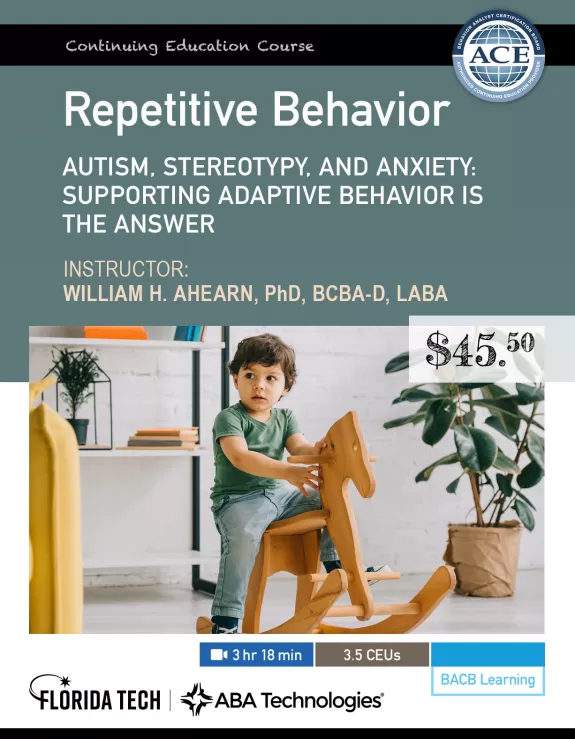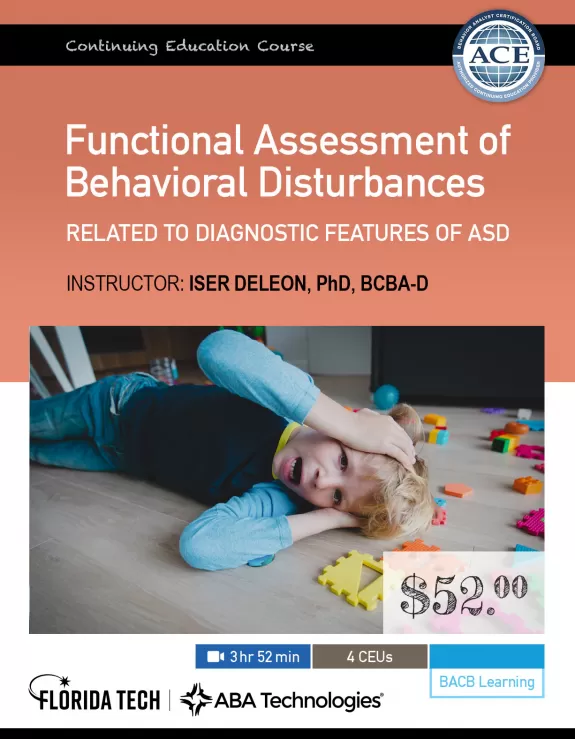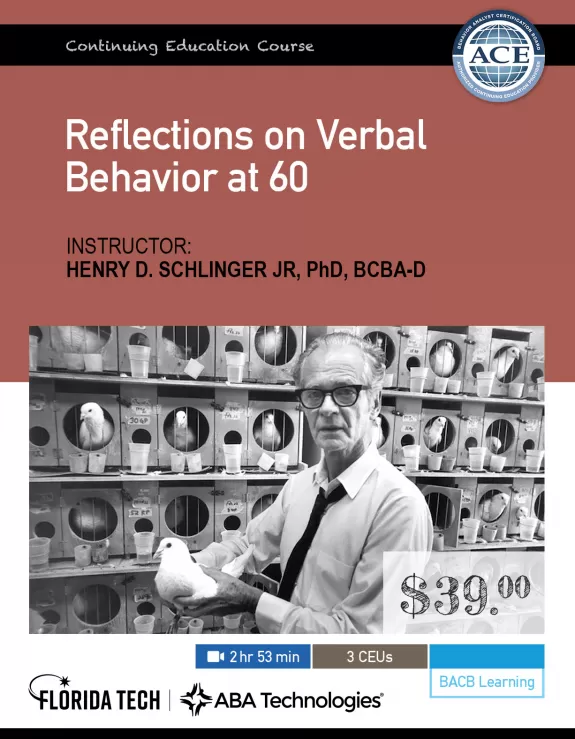Repetitive Behavior: Autism, Stereotypy and Anxiety
Abstract
Stereotypy, repetitive behavior, and anxiety often pose a difficult puzzle for clinicians, especially with clinical research and evidence-based procedures updating at a rapid pace. In an update to his 2013 CE Course, Stereotypy: There Are No Easy Answers, Dr. Bill Ahearn reviews the significant amount of research for treating repetitive and stereotypic behaviors in a clinical, home, or school setting that has furthered our understanding of how and when to treat repetitive and stereotypic behaviors. Dr. Ahearn goes into detail to explain why stereotypy, and often anxiety, is more prevalent for individuals with ASD, by examining how ASD is a social learning disorder where sensory stimulation is more salient than social stimulation. With video examples, Dr. Ahearn shows how a well-constructed teaching environment, along with the most current evidence-based practices can promote appropriate behavior. You will learn that anxiety is often another form of automatically reinforced behavior that accompanies ASD and how to create a behavior analytic account of these behaviors to assess, determine the correct function, and treat these challenging behaviors.
Learning Objectives
What you’ll learn in the course and be able to do afterward
- Given an overview of ASD, Stereotypy, and Anxiety, you will be able to:
- discuss ASD as a social learning disorder;
- operationally define anxiety from a behavior-analytic perspective.
- determine why and how an individual with ASD may pay more attention to sensory stimulation versus social stimulation;
- list potential subtypes of automatically reinforced self-injury and describe how the proposed subtypes of automatically reinforced self-injury relate to predicting treatment efficacy.
- With an overview of assessment repetitive, self-injurious, and anxiety:
- determine and target situations and environments in which automatically reinforced behaviors are problematic;
- assess whether anxiety is occurring in an individual with limited communication skills.
- After reviewing updated literature and watching video models:
- list two or more intervention strategies for treating for treating automatically reinforced behavior;
- explain the standard RIRD procedure and the possible variations;
- explain how relaxation training and exposure can be a treatment for anxiety.
Partnership
This course is delivered through Florida Tech. Clicking "Enroll Now" will take you to Florida Tech’s website where you can Add to Cart, Checkout, and complete the course. Come back to our website for podcasts, blogs, courses, and content.





